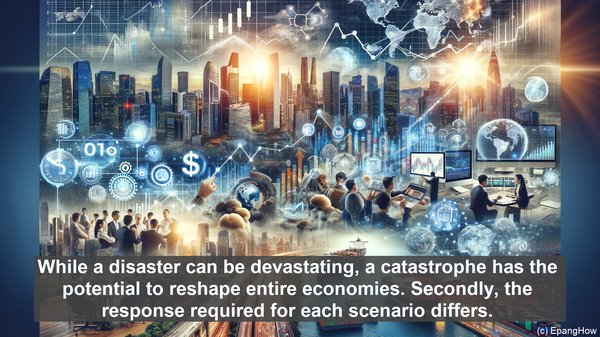Introduction: The Gravity of Financial Events
Hello and welcome! When it comes to the world of finance, the impact of certain events can be far-reaching. Today, we’re going to explore the difference between two such events: a financial disaster and a financial catastrophe. While these terms may sound similar, they represent distinct levels of severity. Understanding these differences is crucial for anyone involved in the financial realm, from investors to policymakers. So, let’s dive in!

Defining a Financial Disaster: A Significant Setback
A financial disaster refers to a major event that disrupts the normal functioning of financial systems. It often involves a significant loss of value, whether it’s in the stock market, real estate, or other assets. Think of a sudden market crash or a large-scale corporate bankruptcy. These events can have a profound impact on individuals, businesses, and even entire economies. The aftermath of a financial disaster is characterized by a period of instability, as stakeholders scramble to mitigate the damage and restore confidence.

Unpacking a Financial Catastrophe: A Systemic Breakdown
In contrast, a financial catastrophe goes beyond a single event. It signifies a systemic breakdown, where multiple sectors or even entire financial systems are in jeopardy. Picture a domino effect, where the collapse of one institution triggers a chain reaction of failures. The 2008 global financial crisis serves as a prime example. A financial catastrophe is not only marked by severe economic consequences but also by the erosion of trust and the need for extensive regulatory measures to prevent future occurrences.
Implications and Lessons: Why the Difference Matters
Understanding the distinction between a financial disaster and a financial catastrophe is crucial for several reasons. Firstly, it helps in assessing the potential impact of an event. While a disaster can be devastating, a catastrophe has the potential to reshape entire economies. Secondly, the response required for each scenario differs. A disaster may call for immediate measures to stabilize the situation, while a catastrophe necessitates long-term reforms. Finally, the prevention aspect is vital. By recognizing the signs of a disaster, policymakers and market participants can take proactive steps to avert a catastrophe.
